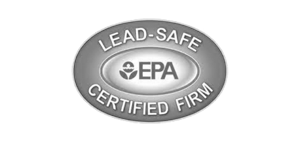Are you wondering if a ceiling leak means you need to replace the drywall? Ceiling water damage can be tricky. It might look like a small leak, but it could be hiding big problems.
Key Takeaways
- Professional evaluations are essential for determining the extent of ceiling water damage.
- Visible watermarks and texture changes indicate a need for drywall replacement.
- Hidden water damage may require thorough diagnostics, including inspections behind baseboards.
- The source and duration of water exposure are critical factors in deciding the repair approach.
- Immediate action, such as shutting off water sources and contacting professionals like Distinctive Restoration.
Signs of Ceiling Water Damage
Spotting water damage early can prevent big repair costs. Knowing the signs helps you act fast to avoid bigger problems.
Visible Watermarks
Watermarks on your ceiling are a clear sign of damage. They look like round shapes or streaks, showing a leak above. These marks mean the drywall might need to be replaced.
Moisture and Texture Changes
Changes in ceiling texture can also point to water damage. A damp ceiling feels soft and might sag or bubble. This means the drywall could be weak and need to be replaced.
Hidden Signs of Moisture
Finding hidden leaks is tricky, but there are clues. Look under carpets or behind baseboards for hidden moisture. Sometimes, you need to dig deeper to find water damage signs, ensuring they’re fixed before they get worse.
Immediate Steps to Take When You Notice a Leak
Acting fast when you see a leak is key to avoid big damage and dangers. Quick action can save a lot of time and money. Here are the top steps to take when you spot a leak.
Identify the Source of the Leak
Finding where the leak is coming from is the first step. Look for water signs from plumbing, appliances, or roofs. Knowing exactly where it is helps you turn off the water quickly if needed.
Shut Off Electric Power
Keeping safe from electrical dangers is very important when there’s a leak. Turn off the electricity in the area with the leak, especially near water. This step helps avoid electric shocks or fires.
Contain the Leak
After making sure it’s safe and stopping the water, try to stop the leak from spreading. Use buckets, tarps, or towels to catch the water. These steps help manage the situation until help gets there.
Evaluating the Extent of Water Damage
Checking the damage from water in homes or businesses needs careful steps and special tools. This is key to fix things right and stop more damage.
Use of Moisture Meters
Moisture meters are a big help in figuring out water damage. They check moisture levels on different surfaces. By using them on walls, ceilings, and floors, they find the worst spots.
This helps make a plan to fix things. It makes sure the damage is fully understood.
Inspection of Adjacent Areas
Checking areas around the damage is also important. Look at the attic, floors, and roofs. Leaks can spread to these places.
Checking these areas can find where leaks come from. Things like overflowing sinks or broken appliance lines. Tests like tissue paper or drilling holes can help find more damage. Sometimes, experts are needed for detailed checks.
When to Replace Ceiling Drywall
Deciding when to replace damaged drywall requires a close look at the affected area. It’s important to check for damage well. Floods, leaks, or too much moisture can harm ceiling drywall, making it urgent to act.
Assessing the Damage
First, look for signs like water stains, discoloration, or soft spots. These often mean the drywall has been damaged by water and mold. If a lot of the ceiling is affected, it’s best to replace the drywall to keep things safe and looking good.
Mold Growth Concerns
Mold is a big reason to replace ceiling drywall. Leaks can make mold grow, which is bad for health and the building. If you see mold, it’s time to replace the drywall fast. This stops more damage and keeps your home safe.
Preventing Future Ceiling Leaks
To stop ceiling leaks, we need a solid plan. It’s key to use good leak prevention strategies. This keeps our homes safe and dry.
Improving Ventilation
Good house ventilation is crucial, especially in wet areas like kitchens and bathrooms. Using exhaust fans or dehumidifiers helps a lot. They cut down moisture, which means less chance of leaks and mold.
Regular Roof Inspections
Checking the roof often is vital for upkeep. Spotting problems like missing shingles or clogged gutters can stop leaks. Keep the roof clean, check for damage after storms, and fix any issues fast.
Maintaining Plumbing and Gutters
Keeping plumbing and gutters in check is also important. Regular plumbing checks find leaks early. This makes sure pipes and connections are strong and leak-free. Clean gutters often to avoid water overflow and ceiling leaks. Good gutters keep water away from the house, protecting the ceiling and inside.
Professional Water Damage Restoration Services
Getting professional help for water damage has many benefits. Experts can figure out how bad the damage is, fix it, and rebuild what’s needed.
Contact Distinctive Restoration today for professional water damage restoration services.
Advantages of Hiring Professionals
Water damage pros know how to handle the situation. They use special tools and methods to dry and clean up. This helps avoid more damage and stops mold from growing.
They also work faster and do a better job than anyone else. This means your place can get back to normal quicker.
Types of Services Offered
Professional drywall services cover a lot. They include:
- Water extraction and drying
- Structural drying
- Mold remediation
- Content cleaning and restoration
- Rehabilitation of affected areas, including drywall replacement
Costs and Time Estimates
The cost of fixing water damage depends on how bad it is and how hard it is to fix. Even though it might cost a lot at first, it saves money in the long run. It stops more problems from happening.
How long it takes to fix the damage varies. But, getting experts to do it can save a lot of time. This means you can get back to normal faster.
Conclusion
Deciding to replace ceiling drywall after leaks is a big choice. It depends on how much damage there is. Spotting water damage signs, like water marks or hidden moisture, is key.
Quick actions, like turning off power and stopping the leak, keep your home safe. This is very important.
Using tools like moisture meters helps figure out how bad the damage is. If mold shows up, it’s likely you’ll need to replace the drywall.
Professionals bring skills and quick service, which might be worth the cost. They know how to fix water damage right.
Preventing leaks is also important. Keep your home well-ventilated, check your roof, and fix plumbing and gutters. This helps avoid future problems.
By watching your home, you can keep it safe and comfortable. This way, you can feel secure and handle water damage well.







